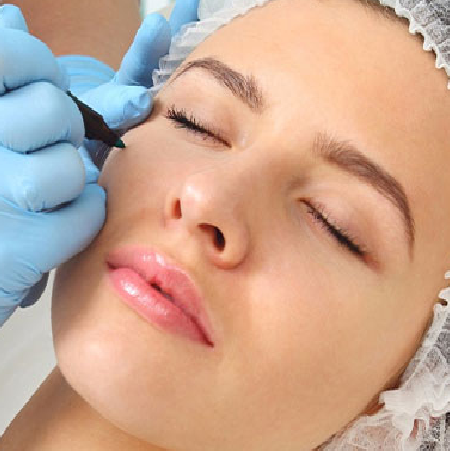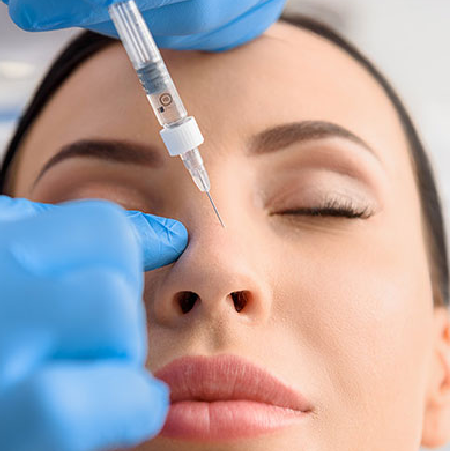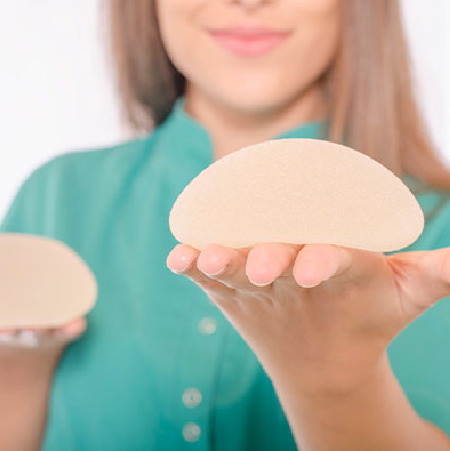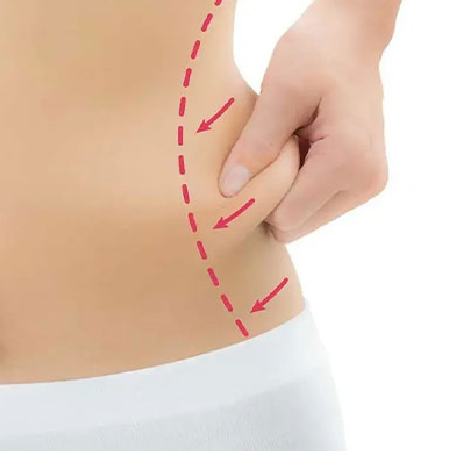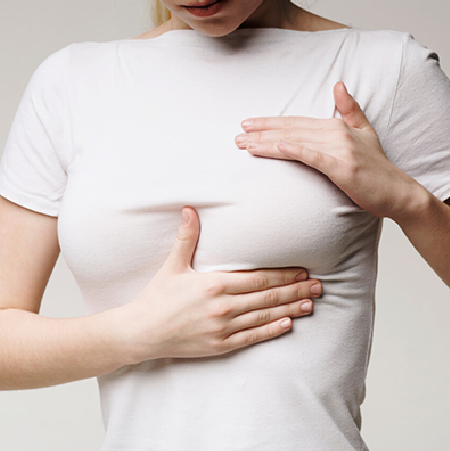Nose filler or nose job

Whether you should get a nose filler or a nose job (rhinoplasty) depends on many things, such as your goals, the affects you want, and your situation. Nose fillers, also called non-surgical rhinoplasty or liquid rhinoplasty, are a way to make the nose look better by injecting skin fillers into certain parts of the nose. Most of the time, this process is suggested for people who want to improve their noses’ shape, symmetry, or contour without having surgery. Nose plugs can fix things like a dorsal hump, an uneven nose, and other small problems.
On the other hand, a nose job, also called rhinoplasty, is a surgical process that reshapes or rebuilds the nose to make it look or work better. It can help with more complicated problems, like changing the size, shape, or position of the nose, fixing internal problems, or making it easier to breathe. It’s important to talk to a qualified plastic surgeon or dermatologist, who can look at your particular problems and suggest the best solution. They will look at your nasal structure, what you want to change, and your medical background to decide if a non-surgical nose filler or a surgical rhinoplasty is the best way to reach your goals.
Read more: Rhinoplasty in Iran
Types OF Rhinoplasty Procedures
Different types of rhinoplasty treatments can be used to fix different problems and get different results. Here are some of the most popular types of rhinoplasty:
Reduction rhinoplasty is a treatment that is often done to make the nose smaller: It includes taking out extra bone or cartilage to make the nose look more balanced and proportional.
Augmentation Rhinoplasty: This type of surgery is done to make the nose bigger or stick out further. This can be done with implants like silicone or cartilage patches that improve the shape of the nose and make it look more defined.
Cultural rhinoplasty: Cultural rhinoplasty is a type of plastic surgery that focuses on fixing the noses of people from different cultural backgrounds. The goal is to keep the ethnicity of the nose while making it look better overall. It might involve things like polishing the tip, making the nostrils narrower, or changing the bridge of the nose.
Revision rhinoplasty: Revision rhinoplasty, also called secondary rhinoplasty, is a surgery that fixes problems or less-than-perfect results from an earlier rhinoplasty. Revision rhinoplasty can fix problems like asymmetry, breathing problems, or unhappiness with the way your nose looks.
Functional Rhinoplasty: The goal of functional rhinoplasty is to make the nose’s airway better and fix breathing problems. It may involve fixing a deviated septum, lowering the size of the turbinate’s in the nose, or fixing other structural problems that block airflow.
Post-Traumatic Rhinoplasty: This type of rhinoplasty corrects breathing issues or nose deformities brought on by fractures or accidents. It focuses on recovering both the nose’s good looks and its ability to work.
It’s important to remember that the way rhinoplasty is done and the methods used will depend on the person’s unique anatomy, goals, and the skill of the surgeon. It is important to talk to a qualified plastic surgeon who specializes in rhinoplasty to figure out the best type of treatment to get the results you want.
Read more: Face lift surgery in Iran
Benefits of a nose filler
Nose fillers, which are also called non-surgical rhinoplasty or liquid rhinoplasty, have many benefits for people who want to change the way their nose looks. Here are a few good things about nose fillers:
Procedure without surgery: One of the best things about nose plugs is that they can replace traditional rhinoplasty without surgery. The procedure includes injecting dermal fillers into certain parts of the nose to fix problems like a dorsal hump, nasal asymmetry, or small flaws. Since it doesn’t involve surgery, there is little to no downtime, and the risk of problems is lower than with invasive surgery.
Quick and easy to use: Most of the time, nose filler shots can be done in a short amount of time, often in the doctor’s office. Most of the time, the process takes less than an hour, so people can get back to their daily lives almost right away. This makes it a good choice for people who are busy or who want a treatment that won’t bother them too much.
Another benefit of nose fillers is that you can usually see the results right away after the operation. When injected, fillers quickly add volume and change the shape of the nose, making it look better right away. This can be especially appealing to people who want to look better quickly and noticeably without the downtime that comes with surgery.
Nose plugs can be changed in a lot of ways and can be taken out again. Skilled injections can target specific parts of the nose to get the effect they want. Also, the results of nose fillers don’t last forever because the body breaks down the filler material slowly over time. This means that if someone isn’t happy with the results or wants to make more changes, the process can be changed or turned back on itself.
Minimal Discomfort: Most people can handle getting nose plugs injected without much pain. Dermal fillers often have a local anesthetic in them, which helps make the process less painful. Also, the healing time is usually short and easy, with only minor bruising or swelling that goes away in a few days.
To find out if nose fillers are right for your unique needs and goals, you should talk to a qualified and experienced medical professional. They can look at your situation and give you personalized help on the best ways to treat it to get the results you want.
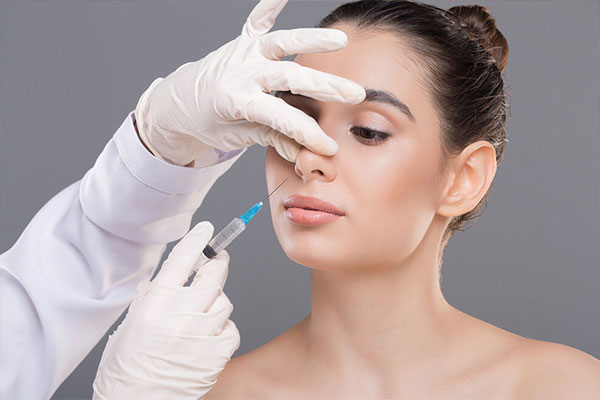
Nonsurgical Rhinoplasty
Nonsurgical rhinoplasty, also called liquid rhinoplasty or nose filler, is a cosmetic treatment that reshapes and improves the look of the nose without having to do surgery. Here are some important things to know about rhinoplasty without surgery:
Procedure: A skilled doctor, like a dermatologist or plastic surgeon, injects dermal fillers into certain parts of the nose during a painless rhinoplasty. The fillers are carefully chosen to add volume, smooth out bumps, or change the shape of the nose to get the look that is wanted.
Enhancements: Nonsurgical rhinoplasty can fix a wide range of problems, such as removing a nasal hump, making the nose more symmetrical, reshaping the tip, getting rid of small depressions or indentations, and improving the nose’s general shape. It can also be used to hide flaws or things that aren’t quite right.
Fillers that are injected: Hyaluronic acid (HA) fillers are the ones that are most often used for painless rhinoplasty. The body produces HA, a substance that keeps the skin hydrated and full. These filters are thought to be safe and work right away. They can be changed to get the results you want, and their effects are usually temporary, lasting anywhere from a few months to over a year, based on the filler used.
When compared to standard surgical rhinoplasty, nonsurgical rhinoplasty has several benefits. It is a minimally invasive treatment that doesn’t require a lot of downtime or general anesthesia. The treatment is usually done in less than an hour, and most people can go back to doing their daily things right away. Also, the effects are immediate, so patients can see changes in the shape of their noses right after the procedure.
Read more: plastic surgery side effects long-term
Some things can’t be done with non-surgical rhinoplasty. It is not good for people who need a lot of reshaping or restructuring of the nose or who have functional problems like trouble breathing. Nonsurgical rhinoplasty is best for people with minor worries about how they look who want to make small changes without having surgery.
Before thinking about nonsurgical rhinoplasty, it’s important to talk to a qualified medical worker for a long time. They will look at your nose, talk to you about your goals and expectations, and decide if you are a good fit for the surgery. They will also give you ideas that are tailored to your needs and wants.
Nonsurgical rhinoplasty can be a good choice for people who want to make minor or temporary changes to the way their nose looks but don’t want the commitment and healing time that come with surgical rhinoplasty. But it’s important to talk to a qualified and experienced medical professional to make sure the treatment is right for you and your goals.
FAQs
What is the main difference between a nose job and a nose filler?
A nose job, also called rhinoplasty, is a surgery that changes the shape and structure of the nose. It can help with a wide range of cosmetic and functional issues, but it needs anesthesia and takes longer to heal. On the other hand, nose fillers, which are also called nonsurgical rhinoplasty or liquid rhinoplasty, involve injecting skin fillers into the nose to make it look better. It does not require surgery and has little downtime, but the effects are only temporary.
Which option is more suitable for me: a nose job or a nose filler?
Whether you should get a nose job or a nose filler depends on your concerns, goals, and situation. People who need a lot of reshaping, restructuring, or fixing of practical problems in the nose are better candidates for a nose job. It solves the problem completely and for good. On the other hand, nose fillers are good for people who have minor worries about how they look and want temporary improvements without surgery. Talking to a qualified plastic surgeon or dermatologist will help you figure out which choice will work best for you based on your needs.
What are the advantages and disadvantages of a nose job compared to nose fillers?
The effects of a nose job are complete and last for a long time. It can help with a wide range of nasal problems, such as changing the nose and fixing problems with how it works. But it is a surgery that needs anesthesia, has risks associated with it, and takes longer to recover from. On the other hand, nose fillers are an alternative to surgery that doesn’t require any downtime and gives you benefits right away. It is a less invasive process, but the results only last a short time, usually a few months to a year or more. Also, nose fillers are best for small cosmetic changes and may not be good for more serious nose problems.






